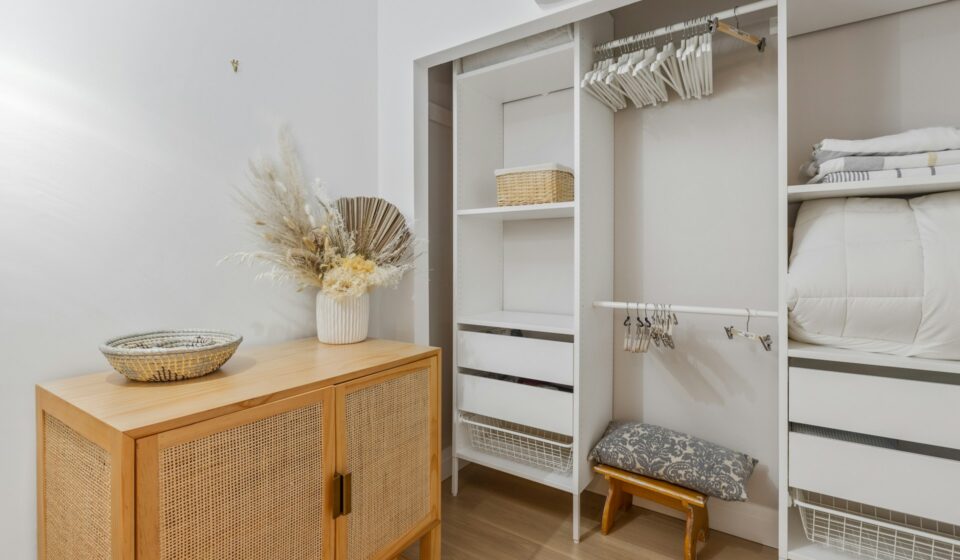
How to Build an Eco-Friendly Closet Without Overspending
Sustainable fashion doesn’t have to come with a steep price tag. Affordable fashion and eco-friendly clothing can go hand in hand—even for those shopping on a tight budget.
Table Of Content
- Why Affordable Fashion and Eco-Friendly Clothing Matter
- The Cost of Fast Fashion
- Small Choices Add Up
- Start with Thrift Shopping for Affordable, Sustainable Style
- The Perks of Second-Hand Finds
- How to Thrift Shop Like a Pro
- Scout Out Eco-Friendly Clothing Brands That Fit Your Budget
- What Makes a Brand Sustainable?
- Examples of Budget-Friendly Sustainable Labels
- Build a Capsule Wardrobe for Maximum Versatility
- Why Fewer, Better Pieces Win
- Key Staples for a Sustainable Capsule
- Care for Your Clothes to Extend Their Life
- Make Every Piece Last
- Rent or Swap Clothing When You Need Something New
- Temporary Trends, Minimal Impact
- Make Mindful Purchases a Habit
- Rethink Your Shopping Triggers
- Sustainable Fashion is for Every Budget
This guide reveals actionable strategies for making planet-conscious style choices while keeping your wallet intact. You’ll discover how to spot sustainable brands, shop smart at thrift stores, choose quality pieces that last, and care for your wardrobe in a way that extends its lifecycle.
Whether you’re new to green living or looking to refine your approach, this blog will show you exactly how to weave sustainability into your everyday outfits (no trend-obsessed spending required).
Why Affordable Fashion and Eco-Friendly Clothing Matter
The Cost of Fast Fashion
Affordable fashion is often equated with disposable trends, but the environmental impact of fast fashion is steep. Textile waste accounts for millions of tons in landfills each year, while production pollution harms air, water, and communities worldwide.
Choosing eco-friendly clothing isn’t just about personal style; it’s about joining a growing movement for social and environmental change.
Small Choices Add Up
Shifting even a few of your clothing purchases to sustainable or second-hand options helps shrink your carbon footprint. Plus, well-chosen pieces outlast fleeting trends, saving you money over time.
Start with Thrift Shopping for Affordable, Sustainable Style
The Perks of Second-Hand Finds
Thrift shopping is one of the quickest (and most enjoyable) ways to score affordable fashion while reducing demand for new production. Pre-owned clothing extends the life of garments, slashes your footprint, and offers unique styles that set you apart.
- Find hidden gems: Boutique thrift stores and curated online shops like Depop, Poshmark, and ThredUP bring vintage, designer, and everyday items right to your doorstep.
- Save money: Pre-loved clothing is usually priced at a fraction of its original cost.
- More eco-friendly choices: Many thrift stores also support local charities, so your spending can have community benefits, too.
How to Thrift Shop Like a Pro
- Set a budget before browsing.
- Know your measurements to avoid ill-fitting purchases.
- Prioritize natural fibers, as they last longer and have a lower environmental impact.
- Check for wear (like holes and stains) and try everything on, if possible.
Scout Out Eco-Friendly Clothing Brands That Fit Your Budget
What Makes a Brand Sustainable?
Not all brands using “green” buzzwords are truly sustainable. Look for:
- Transparent sourcing and production details.
- Certifications like GOTS (Global Organic Textile Standard) or Fair Trade.
- Commitments to ethical labor practices and low-impact materials.
Examples of Budget-Friendly Sustainable Labels
- PACT: Organic cotton basics at affordable prices.
- Everlane: Radical transparency on costs and factories.
- People Tree: Well-made essentials and seasonal pieces underpinned by Fair Trade.
Many of these brands offer sales, student discounts, or loyalty programs that make sustainable fashion more accessible.
Build a Capsule Wardrobe for Maximum Versatility
Why Fewer, Better Pieces Win
A capsule wardrobe centers on a limited number of staples you can mix and match across seasons. This tactic trims unnecessary purchases and encourages mindful shopping, helping you focus on quality and longevity rather than quantity.
Key Staples for a Sustainable Capsule
- Classic jeans and neutral trousers
- A versatile black dress or jumpsuit
- Staple tees and tanks in organic cotton
- Quality sweater or blazer
Choose neutral hues and durable fabrics. Fewer pieces mean more ways to style, which translates to major savings.
Care for Your Clothes to Extend Their Life
Make Every Piece Last
To make the most of your investment sustainably and affordably, take care of your clothes:
- Wash cold and air dry: Reduces energy use and prevents fading.
- Mend and repair: Invest a little time in basic sewing or use a local tailor.
- Store smart: Fold knits, hang shirts, and rotate seasonally.
A well-kept wardrobe helps keep clothing out of landfills and more money in your pocket.
Rent or Swap Clothing When You Need Something New
Temporary Trends, Minimal Impact
Have a wedding or interview on the calendar? Online clothing rentals and local swap events provide access to pieces you’ll only wear a few times. Renting high-quality items for special events or swapping with friends keeps your style fresh and sustainable.
- Try services like Rent the Runway or Nuuly for trendy, designer, or occasionwear.
- Host a swap: Organize a get-together where everyone brings gently worn items to exchange.
Make Mindful Purchases a Habit
Rethink Your Shopping Triggers
Before buying anything new, pause and ask:
- Will I wear this at least 30 times?
- Is the material durable and eco-friendly?
- Am I buying this because I truly love it or just because it’s discounted?
This intentional approach is at the heart of affordable fashion that doesn’t compromise ethics or style.
Sustainable Fashion is for Every Budget
Making eco-friendly clothing choices isn’t about spending more; it’s about spending smarter. By thrifting, supporting transparent brands, maintaining your wardrobe, and rethinking what you really need, anyone can enjoy sustainable style. Each small step contributes to a better fashion future—for you, and for the planet.
If you want to start building an affordable and sustainable wardrobe, keep exploring resources like Good On You for brand ratings, or join local online communities focused on thrift shopping tips and swap events.





